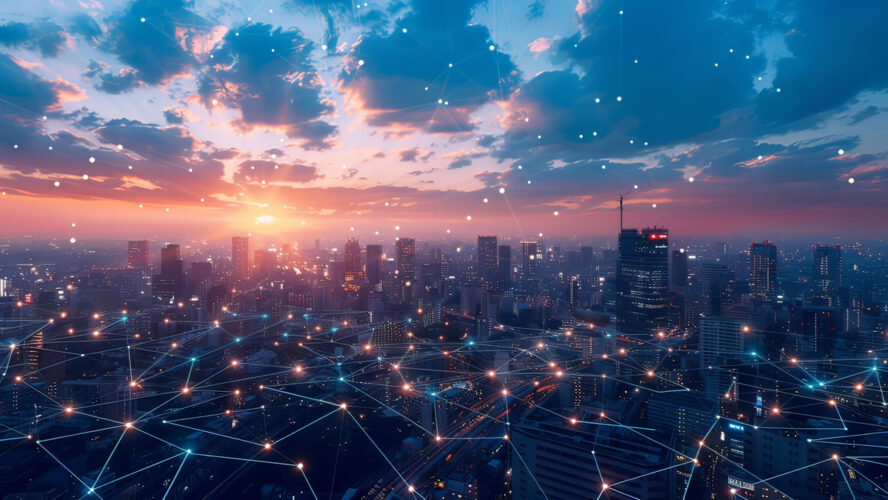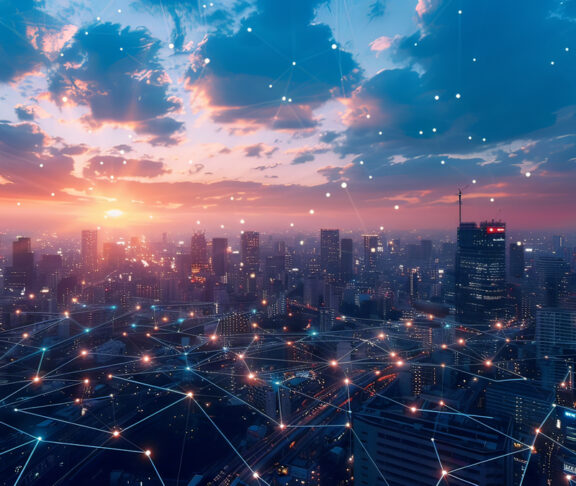
Manish Gulyani
CMO for Network Infrastructure, Nokia
As AI workloads grow in scale and complexity, resilient, high-performance network connectivity to, within and between data centres is more essential than ever.
Currently, the hype surrounding artificial intelligence (AI) is off the scale. Some commentators have called it the business disruptor of our generation, noting that AI has the potential to be even bigger than the internet. That might sound outlandish to some, but Manish Gulyani, CMO for Network Infrastructure at Nokia, thinks the hype is justified.
Demands for AI in every industry
“We believe the impact of AI is going to be huge in all parts of the economy and society,” says Gulyani. “From healthcare to manufacturing, the expectation is that its massive compute power will simplify or shorten time to innovation in every industry, across a broad range of applications.”
No wonder AI advances are driving major investment cycles from everyone, from hyperscalers and cloud service providers to enterprises and governments — all seeking greater agility, efficiency, profitability and competitiveness.
Limitations of existing networks in an AI world
There is a big, technical elephant in the room to deal with, however. AI workloads are far more compute-intensive than workloads created by traditional computing applications and usually involve the exchange of vast data volumes. Furthermore, these volumes require rapid processing to shorten model training times and deliver the best user experiences. “Current networks deployed today are not designed for that combined capacity, that level of performance from a latency perspective and loss perspective, and that level of reliability,” says Gulyani.
Running AI workloads on existing network infrastructure can cause engines to slow and training to use up more time and power. To properly unleash the business value of AI, networks must offer high performance, low latency, high reliability and rapid responsiveness.
Networking is needed to connect the racks
of GPU servers within the data centre.
Backbone of distributed computing
Data centres are the backbone of the AI era, enabling everything from cloud computing to data storage. To connect users to data centres and to connect data centres with each other, the network matters even more. Gulyani explains that this is driving a market need for vendors who can offer powerful inter and intra-data centre network connectivity solutions, from the switching fabrics inside data centres to IP and optical interconnection between data centres.
Because, at its heart, AI is a distributed computing problem at immense scale, especially as increasing numbers of industries, governments and organisations build or adopt AI infrastructure. “The more distributed workloads and data centres become, the more the network has a role to play,” says Gulyani.
Providing connectivity to, within and between data centres
At a micro level, this includes the graphics processing units (GPUs) that work together inside a data centre to attack and digest large datasets to accelerate the training of AI models. “Networking is needed to connect the racks of GPU servers within the data centre,” says Gulyani. “However, because GPUs are very hungry processors and a lot of them are required, cloud builders and datacentre operators face space and power constraints within single locations. So, they’re building multiple data centres within campus environments.”
Therefore, with data centre proliferation happening worldwide, Nokia offers a three-pronged solution — data centre switching, IP routing and optical networking — to provide connectivity between and across data centres with reliability, scalability, performance and security.
Protecting networks from attacks
Security must never be underestimated, warns Gulyani. “Distribution creates a security challenge,” he says. “When data leaves a data centre, it creates an exposure point for bad actors to attack. Which is why we’re positioning quantum safe solutions and Denial of Service (DoS) prevention solutions to protect the network surface from attacks today and in the future.”
Because networks are out of sight, they’re also largely out of mind. Gulyani says: “We only notice the network when it’s not responding. If the internet goes down, industry and society almost stop. Imagine a world where all applications are AI-based and the network goes down because it can’t cope. What happens then?” We need security to be built into the network, rather than being an afterthought.



